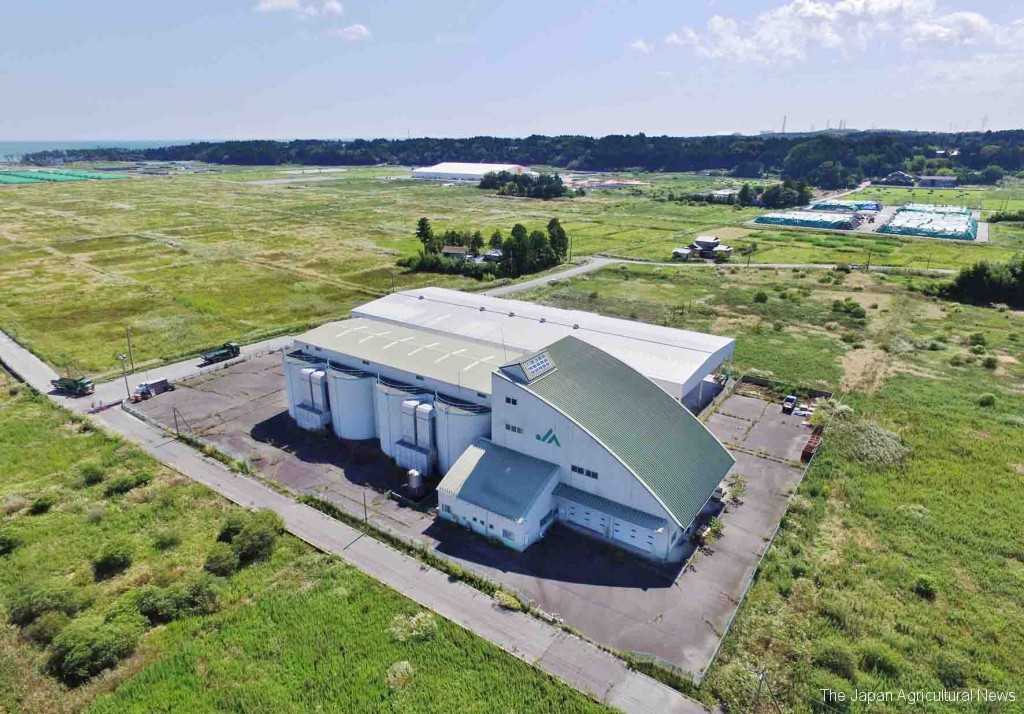
A country elevator stands still and silent in the “difficult-to-return zone,” being affected by the Fukushima Daiichi Nuclear Power Plant Accident in March 2011. A view from the sky shows the nuclear power plant’s exhaust pipes sticking out 4 km away from the building (to the far right). (in Futaba town, Fukushima Prefecture)
The seventh autumn has come since the Fukushima No. 1 Nuclear Power Plant was ravaged by the Great East Japan Earthquake in March 2011. In Futaba town in Fukushima Prefecture, one of the so-called “difficult-to-return zones,” one country elevator that belongs to a local agricultural cooperative (JA Fukushima Sakura) stands still and silent in a flat land which used to be covered by fertile rice paddies.
Before the accident, the autumn was the time to enjoy hearing the sound of combine harvesters and seeing busy farmers bringing newly-harvested rice to the facility with a storage capacity of 2,359 tons.
But today, the rice field is covered by weeds and there are only construction trucks driving through what used to be farm roads. Because of the strictly-limited entry to the area, the country elevator is left almost untouched after the earthquake. Some said that it’s going to be disassembled in the near future.
This month, the area of about 560 hectares including this country elevator was chosen to be one of the “reconstruction and rehabilitation bases” by the Japanese government. The government is seeking to lift the evacuation orders for this region by the spring of 2022, after turning it into a business district by setting up the infrastructure needed to attract plants and firms.

